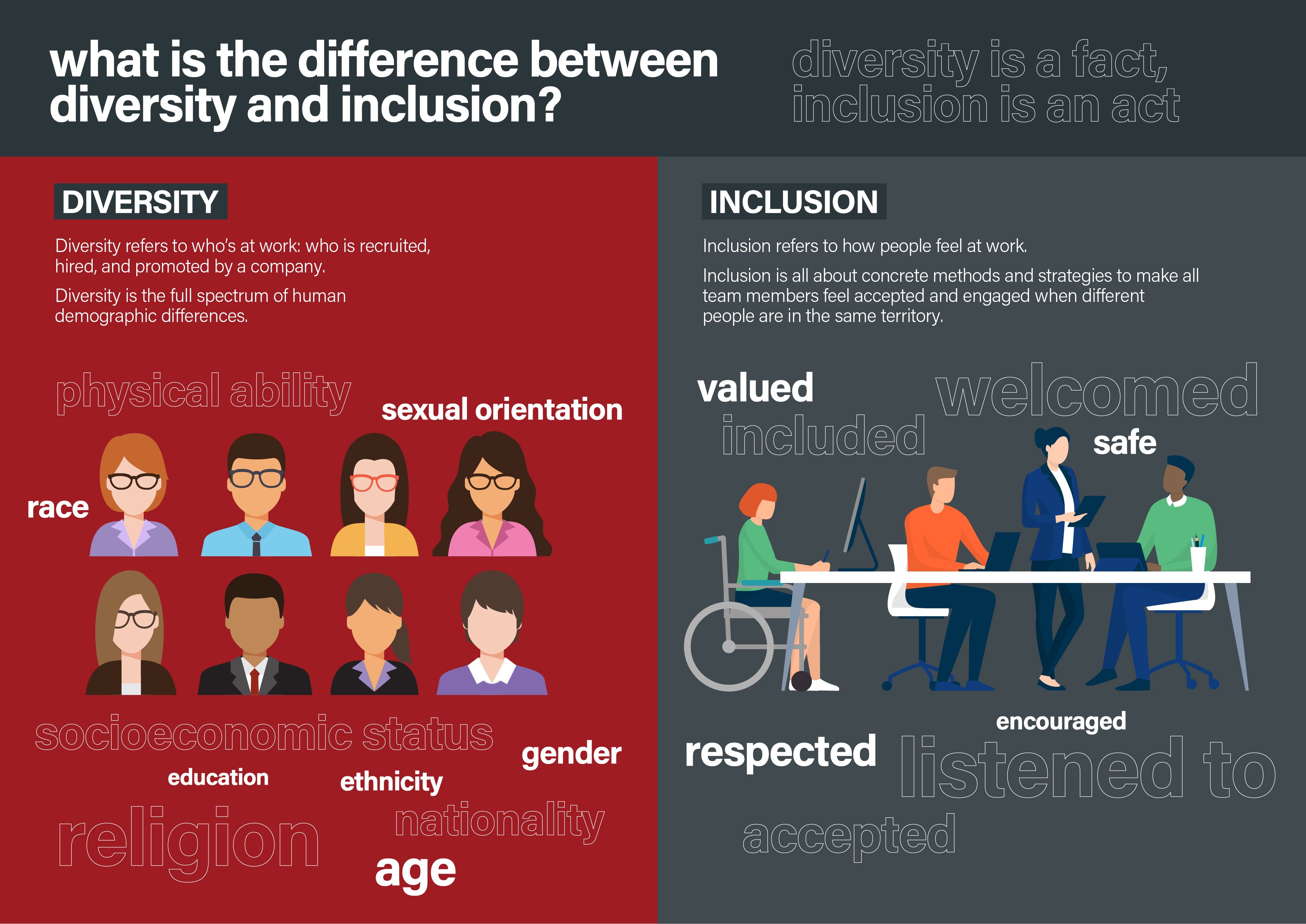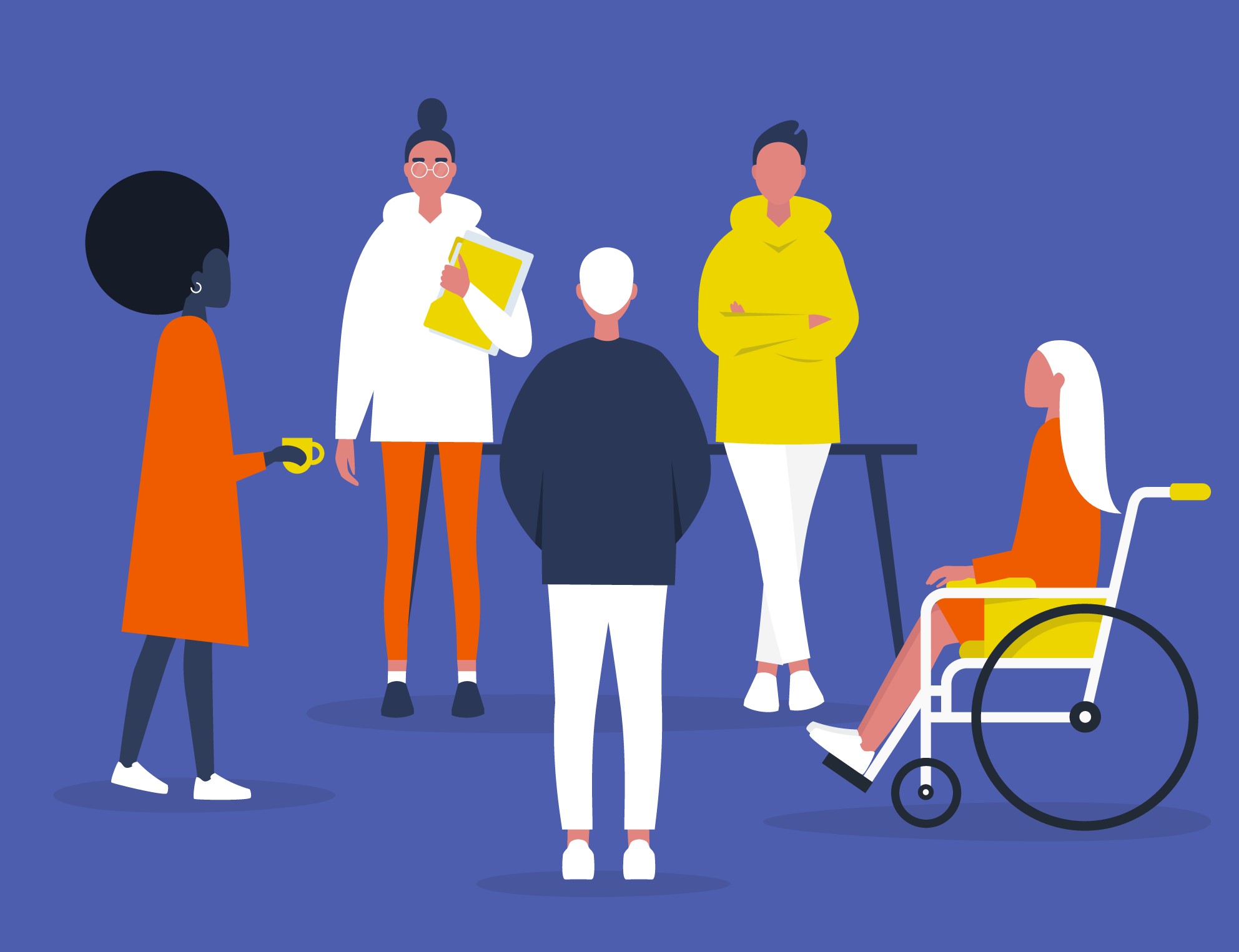In our blog What is diversity and inclusion we took a look at defining the concept of diversity and inclusion as a single entity – but the sharp-eyed among us will have noticed what is often a single objective is made up of two very distinct, and very important, words. Here’s a quick overview of what each of them means and how they work together.
What is diversity?
Diversity in the workplace describes the variation in personal, physical, and social characteristics, such as gender, ethnicity, age, and education. Diversity can be a visually obvious variation, such as the colour of someone’s hair or skin, or may not be immediately apparent, such as their nationality or even their sexual orientation.
Although we often think of diversity as the differences between us, it’s actually more to do with what we have in common. Ultimately diversity means we don’t end up focusing on the differences in a way that suppresses or prevents individual success.
What is inclusion?
Inclusion refers to the procedures that organisations implement to integrate everyone in the workplace, allowing their differences to coexist in a mutually beneficial way. The goal of inclusion strategies is to make everyone feel accepted and comfortable, ready to share their opinions and thoughts without hesitation.
Diversity is a globally accepted concept which brings different people into the same territory. Inclusion, on the other hand, introduces concrete methods and strategies to make diversity work.
Inclusion is quite a basic human feeling – have you ever been excluded from an activity or not invited to a social event? It doesn’t feel great, right? This feeling of belonging is a huge driver for us, and if we don’t feel we’re a part of the organisations we work for, this feeling can have a negative effect on the way we interact in the workplace.

How do diversity and inclusion work together?
Now that we have our definitions, it becomes easier to see why they go hand in hand. Even though we may be much more aware of our decisions these days, humans can still make choices that affect others with an inherent lack of diversity. We may not realise that we’re subconsciously choosing social circles filled with people of the same race, nationality or social standing as us, or, more distressingly, some humans may actively avoid dealing with certain groups based on bias.
Imagine how you’d feel if you were rejected from a new job, or denied the opportunity to lead a project based solely on who you are rather than your skills and experience? This still happens, even if the people making the decisions aren’t aware that they’re doing it.
By understanding both elements of diversity and inclusion, we can understand how to change or maintain the way we include a wider variety of people, not just to ensure no one experiences the feeling of being ‘left out’, but also to reap the benefits of having a more diverse workplace.
Now that you're clued up on the terminology, check out our D&I in the Workplace Report to find out the results of our in depth research into what you think about D&I in your organisation and see if the rest of the UK agrees or to learn more about diversity and inclusion in the workplace check out our infographic with some key facts and figures which could help you address and improve your diversity and inclusion strategies.
/DRPG%2045th%20Anniversary/DRPG%2045th%20White%20-%20No%20Text.png)


 Back
Back

/Blog%20Images/AEO%20SEO%20-%20Digital%20Blog.jpg)



